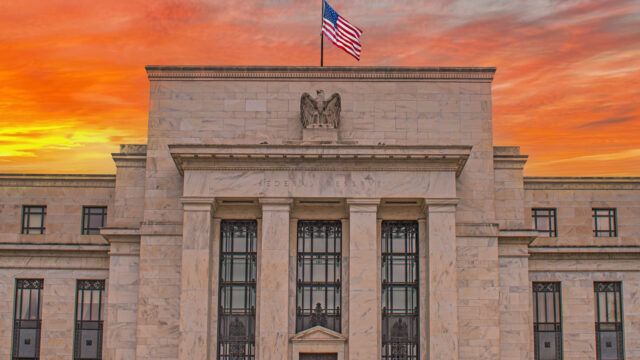Markets largely took the US Federal Reserve’s decision to cut its benchmark interest rate by 50 basis points (bps), its first cut in over four years, in its stride given the extent to which it had been choreographed by the Fed, although, some investors warned that the path towards “r-star” would face more challenges.
“The markets have been riveted with a singular focus on one number, as a reflection of the Federal Reserve policy stance and the primary question has been whether the Fed would cut 25bo or 50bp at today’s (18 September) meeting. As if one number carried as much relevance to financial assets as Pi does to mathematics and physics, in determining a circle’s diameter to its circumference,” said Rick Rieder, chief investment officer of global fixed Income and head of BlackRock’s global allocation investment team.
“A 50bp cut, bringing the Fed Funds rate range to 4.75%-5.00% is not Pi, a special number that reveals many secrets. The future rate path remains uncertain and data dependent and all that has happened is the Fed has jumped out to a faster start on the path to neutral, an appropriate move given how far they are from their likely destination.”
The Fed’s decision to cut came as no surprise given that central bank chair Jerome Powell has adopted a more dovish stance since Jackson Hole and the battle to rein in inflation appears to be heading in the right direction, while data suggests that the labour market is softening.
The question mainly hinged on whether the Fed would cut by 25bp or 50bp at yesterday’s meeting. In a sign of how unclear it was whether the Fed would cut by 25bp or 50bp, Michelle Bowman, a member of the Federal Open Market Committee, voted in favour of a quarter-point rate cut, the first Fed governor since 2005 to dissent from any rate decision.
The Fed also updated its dot plot forecast and is now projecting a further 50bp cut later this year followed by a further percentage point cut in 2025. The Fed is now forecasting that its benchmark interest rate will fall to just below 3% by the end of 2026.
However, some investors think that it is possible that the Fed will cut more aggressively than its projections currently suggest.
“When we look at the rate hiking cycle, you can certainly see that the Federal Reserve was very aggressive on the way up and they’re willing to do slightly larger jumps on the way down,” said Kerry Craig, global market strategist at JP Morgan Asset Management.
“For us, this does present somewhat of a risk. I liken it to running down a hill. The chance of tripping gets a little bit higher as you start to run down the other side.”
Nonplussed
Investors had braced for wild swings ahead of the meeting, although some volatility when Powell spoke notwithstanding, the reaction of markets was largely nonplussed.
The S&P 500 closed the day 0.3% lower having initially jumped higher, while the two-year Treasury yield, which is often used as the litmus test for the impact of monetary policy on markets, was down 0.02 percentage points by yesterday evening.
This may have been a result of the fact that to the extent markets were leaning one way between a 25bp or 50bp cut, most had anticipated the larger out of the two. According to Vontobel, investors were pricing in a cut of around 42bp ahead of yesterday’s meeting.
Where this leaves investors now is generally moving overweight duration, while some also said that they expected to see a bounce back in interest-rate sensitive stocks such as consumer cyclical, real estate and biotech.
“We see that risks are skewed towards more easing and the Fed may move at a faster pace of rate normalisation than indicating by the median dot. Should labour markets continue to soften, driven by the two job reports we have from now until November’s FOMC, markets may push for a 50bp cut from the Fed,” said Ray Sharma-Ong, head of multi-asset investment solutions for southeast Asia at Abrdn.
“With this backdrop, we are constructive on duration, as rates have two drivers supporting its decline: Fed cuts, and softer data prompting accelerated further front loading of Fed cuts.”
Christian Hoffmann, head of fixed income at Thornburg Investment Management, warned however that there was not much further room for a rally.
“US equity indices rallied nearly every day last week and are flirting with all-time highs and elevated valuations, along with benchmark Treasury rates touching lows for the year. Bonds immediately responded with a mixed reaction while stocks jubilantly bumped higher, but I worry about a reversal from here,” he said.
In Asia, BlackRock noted that interest rates have remained high relative to weaker regional inflation data so this provided ample room for central banks in the region to cut and should be positive for Asian fixed income.

















